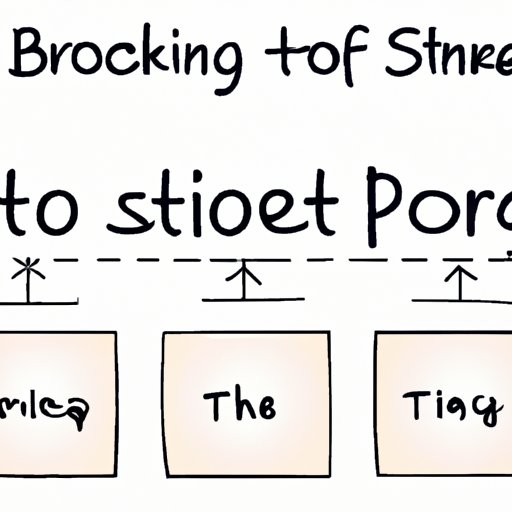Introduction
Writing a book requires commitment, dedication and hard work. But even before you begin writing, it’s important to have a plan in place. This plan, or book outline, will help you organize your thoughts, keep track of the story arc, and make sure that all the pieces of your book fit together cohesively.
A book outline is essentially a roadmap of the major plot points and storylines of your book. It outlines the story and characters, establishes the setting, and helps you decide on the point of view. Having an outline in place before you start writing can save you time and energy in the long run – and ensure that you don’t get stuck in the middle of your book with no idea where to go.

Brainstorming Ideas and Creating a Story Outline
The first step in creating a book outline is to brainstorm ideas. Let your imagination run wild and jot down any ideas that come to mind. Once you have a list of potential ideas, you can start to narrow them down and determine which ones will make the best foundation for your story.
You should also create a timeline for your story. This will help you visualize the story arc and understand how each scene fits into the overall narrative. You can also use this timeline to identify the main characters and their roles in the story.
Developing a 3-Act Structure for Your Book
Once you’ve identified the main characters and created a timeline for your story, it’s time to develop a 3-act structure. A 3-act structure is a common storytelling technique used to divide stories into three distinct sections: the setup, the confrontation, and the resolution.
The setup introduces the characters, setting, and conflict. The confrontation is when the characters face their challenges and obstacles. And the resolution is when the story reaches its climax and the conflict is resolved. Understanding this structure can help you organize your thoughts and ensure that the story flows logically from beginning to end.
Creating an Outline of the Major Plot Points
Now that you have an understanding of the 3-act structure, you can start to create an outline of the major plot points. This will help you determine the key events in your story and establish the setting, including the time and place. You should also consider any subplots or minor characters and how they fit into the story arc.

Deciding on the Point of View
One of the most important aspects of your book outline is deciding on the point of view. You will need to choose between a first person or third person point of view. In first person, the narrator is a character in the story who speaks directly to the reader. In third person, the narrator is not a character in the story and speaks about the characters instead of to them.
You will also need to decide between omniscient and limited narration. Omniscient narration gives the reader access to all the characters’ thoughts and feelings, while limited narration restricts the reader to only knowing what one character knows.
Conclusion
Having an outline in place before you start writing is essential if you want to write a successful book. An outline will help you organize your thoughts, keep track of the story arc, and make sure that all the pieces of your book fit together cohesively. It will also help you determine the main characters and their roles, develop a 3-act structure, and decide on the point of view.
Creating an outline is the first step in the writing process, and it’s an important step that shouldn’t be overlooked. With a well-crafted outline, you’ll be able to write your book efficiently and effectively.
(Note: Is this article not meeting your expectations? Do you have knowledge or insights to share? Unlock new opportunities and expand your reach by joining our authors team. Click Registration to join us and share your expertise with our readers.)
